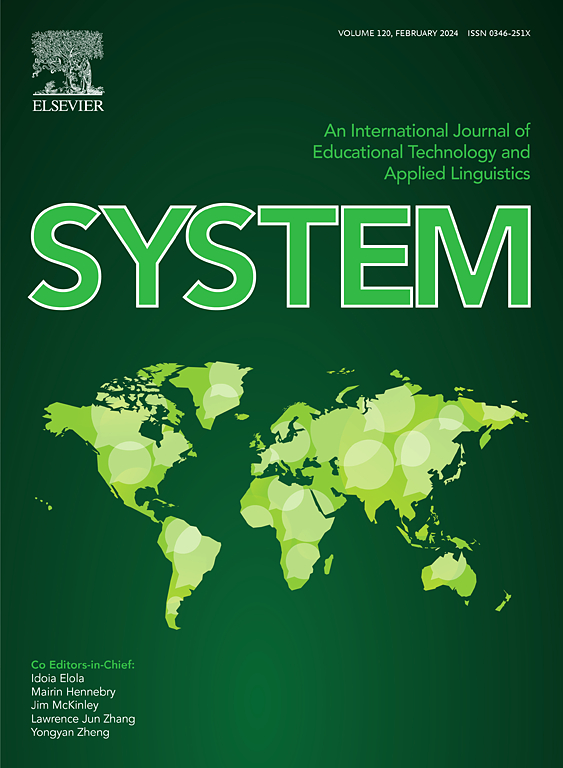Growth performance and total tract digestibility of nutrients for weanling pigs are improved by an exogenous xylanase and a stimbiotic regardless of maternal xylanase consumption
IF 7
1区 农林科学
Q1 Agricultural and Biological Sciences
引用次数: 0
Abstract
Exogenous xylanase can increase utilization of fiber and energy when included in diets for pigs, and xylo-oligosaccharides (XOS) may improve growth performance of pigs by modulating intestinal fermentation. However, it is unclear if a stimbiotic (i.e., a combination of xylanase and XOS) has superior effects compared with a xylanase alone, and there is a lack of data demonstrating if xylanase fed to lactating sows influences growth performance of weanling pigs. Therefore, two hypotheses were tested: 1) xylanase and stimbiotic improve growth performance, apparent total tract digestibility (ATTD) of gross energy (GE) and total dietary fiber (TDF), digestible energy (DE), and intestinal health of weanling pigs and 2) offspring of sows fed xylanase in lactation have greater growth performance after weaning than offspring of sows fed no xylanase during lactation. One hundred and twenty pigs were weaned from sows fed a diet without xylanase, and 120 pigs were weaned from sows fed a lactation diet containing 16,000 beechwood xylanase units per kg (initial weight: 5.81 ± 0.50 kg). Pigs were allotted to a 2 × 3 factorial with two sow groups (lactation diet without or with xylanase) and three dietary treatments (i.e., control, control plus xylanase, or control plus stimbiotic). There were no interactions between sow treatment and post-weaning pig treatment, and sow treatment did not impact post-weaning growth or ATTD of GE and TDF in weaned pigs. From d 15 to 28 post-weaning, the ADG, G:F, ATTD of GE and TDF, and concentration of DE were greater (P < 0.05) for pigs fed the diet with stimbiotic than if fed the xylanase diet or the control diet, and pigs fed the xylanase diet had greater (P < 0.05) ADG, G:F, ATTD of GE and TDF, and concentration of DE than pigs fed the control diet. From d 29 to 42 post-weaning, pigs fed the diets with xylanase or stimbiotic had greater (P < 0.05) ADG, ATTD of GE and TDF, and DE than pigs fed the control diet. Pigs fed xylanase or stimbiotic had greater ATTD of GE and TDF, greater DE, and greater overall ADG, G:F, and final body weight on d 42 post-weaning than pigs fed the control diet, but feeding sows xylanase in lactation did not influence post-weaning growth performance.外源木聚糖酶和刺激物均能提高断奶仔猪的生长性能和营养物质的全消化道消化率,而与母源木聚糖酶的消耗无关
饲粮中添加外源木聚糖酶可以提高猪对纤维和能量的利用,低聚木糖(XOS)可能通过调节肠道发酵来提高猪的生长性能。然而,目前尚不清楚刺激物(即木聚糖酶和XOS的组合)是否比单独使用木聚糖酶具有更好的效果,并且缺乏数据表明,哺乳母猪饲喂木聚糖酶是否会影响断奶猪的生长性能。因此,本研究验证了两个假设:1)木聚糖酶和刺激剂提高了断奶仔猪的生长性能、总能(GE)、总膳食纤维(TDF)、消化能(DE)的表观全道消化率(ATTD)和肠道健康;2)哺乳期间饲喂木聚糖酶的母猪断奶后的生长性能优于未饲喂木聚糖酶的母猪。120头断奶猪来自饲喂不含木聚糖酶饲粮的母猪,120头断奶猪来自饲喂含有16000单位/ kg山毛榉木聚糖酶(初始体重:5.81±0.50 kg)的哺乳饲粮的母猪。按2 × 3因子分配2个母猪组(不含木聚糖酶或添加木聚糖酶的哺乳饲粮)和3个饲粮处理(对照组、对照组加木聚糖酶或对照组加刺激物)。母猪处理与断奶仔猪处理之间不存在交互作用,母猪处理不影响断奶仔猪断奶后生长及GE和TDF的ATTD。断奶后第15 ~ 28 d,与木聚糖酶饲粮和对照饲粮相比,添加刺激性饲粮的猪的ADG、G:F、GE和TDF的ATTD和DE浓度均高于(P < 0.05),且木聚糖酶饲粮的ADG、G:F、GE和TDF的ATTD和DE浓度高于(P < 0.05)对照饲粮。断奶后第29 ~ 42天,添加木聚糖酶和刺激物的饲粮的平均日增重、总能和总脂肪的ATTD以及消化能均高于对照组(P < 0.05)。断奶后第42 d,饲粮中添加木聚糖酶或刺激饲料的猪比对照组饲粮中添加木聚糖酶的猪具有更高的总日增重、总肥力、总重比和最终体重,但在哺乳期饲喂木聚糖酶对仔猪断奶后生长性能没有影响。
本文章由计算机程序翻译,如有差异,请以英文原文为准。
求助全文
约1分钟内获得全文
求助全文
来源期刊

Journal of Animal Science and Biotechnology
AGRICULTURE, DAIRY & ANIMAL SCIENCE-
CiteScore
9.90
自引率
2.90%
发文量
822
审稿时长
17 weeks
期刊介绍:
Journal of Animal Science and Biotechnology is an open access, peer-reviewed journal that encompasses all aspects of animal science and biotechnology. That includes domestic animal production, animal genetics and breeding, animal reproduction and physiology, animal nutrition and biochemistry, feed processing technology and bioevaluation, animal biotechnology, and meat science.
 求助内容:
求助内容: 应助结果提醒方式:
应助结果提醒方式:


